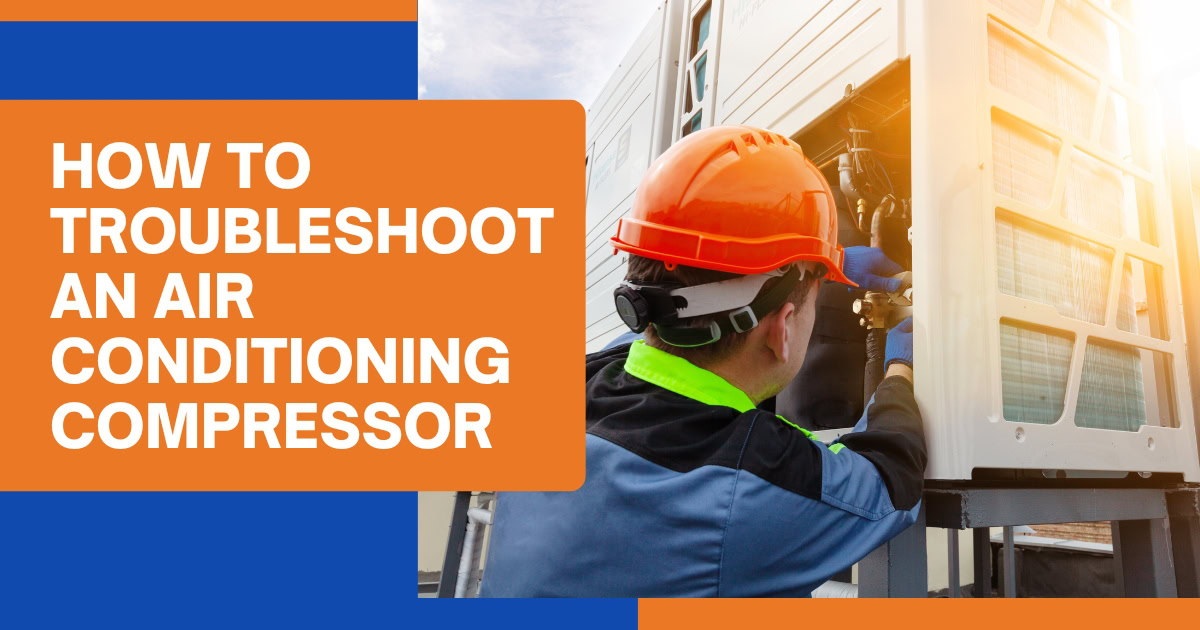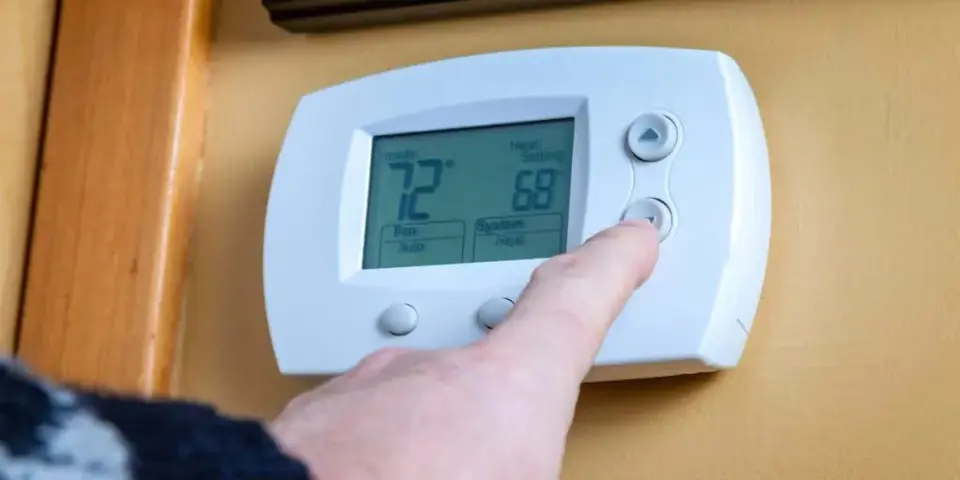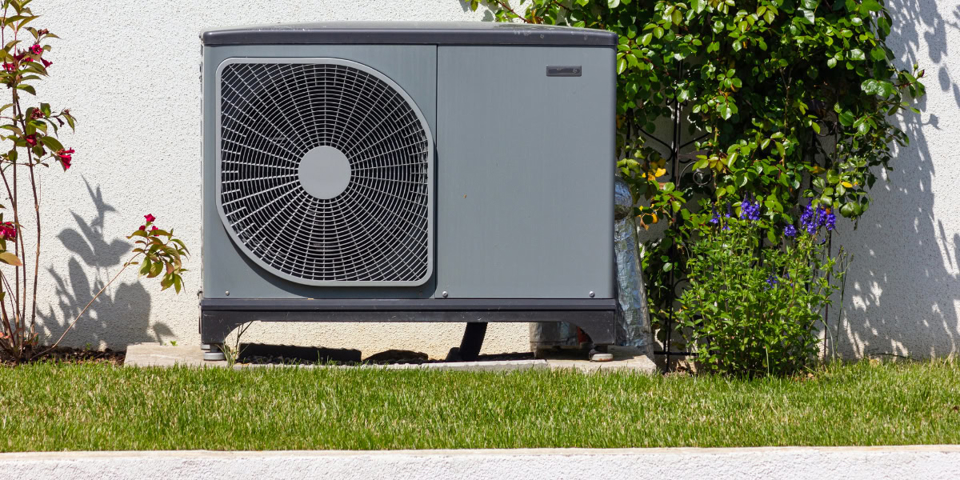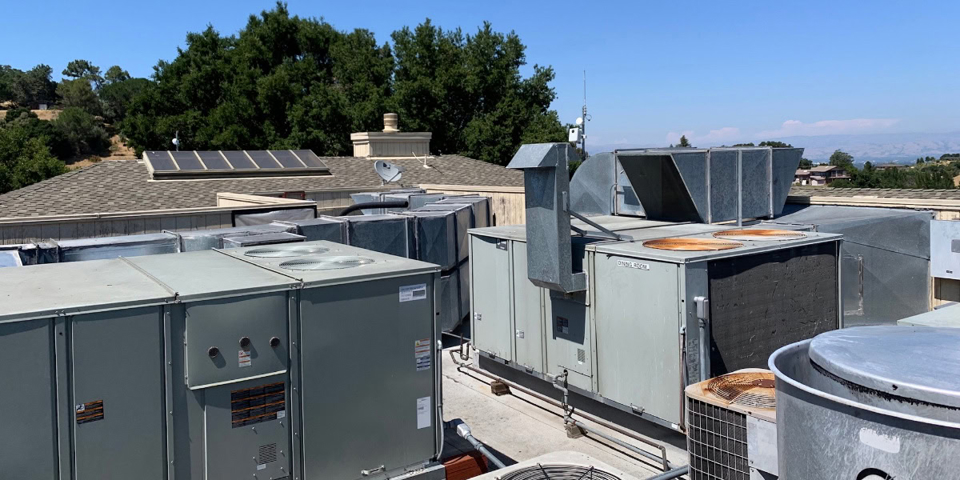A properly functioning air conditioning compressor is crucial for maintaining a comfortable indoor environment. When issues arise, it can be frustrating, but knowing how to troubleshoot AC compressors can save time and money. This guide will provide simple steps for troubleshooting AC compressors and ensuring your system runs smoothly. If you’re unfamiliar with certain terms or procedures, consult a professional for assistance.
Common Signs of a Faulty A/C Compressor
Recognizing the symptoms of a failing AC compressor is the first step in troubleshooting. Here are common signs:
- Warm Air Instead of Cool:
If your AC blows warm air, the compressor might not be functioning properly. This often happens due to insufficient refrigerant or a worn-out compressor clutch. Regularly checking refrigerant levels can prevent this issue. - Strange Noises:
Grinding, squealing, or clicking sounds could indicate mechanical issues. These noises can also result from a failing motor or worn bearings. Addressing the problem early can save you from costlier repairs later. - High Energy Bills:
A malfunctioning compressor can overwork, leading to higher energy costs. This issue not only affects your wallet but also puts unnecessary strain on your AC unit, reducing its lifespan. - Frequent tripping of circuit breakers:
This could signal an electrical issue with the compressor. Consistent tripping might also indicate a short circuit or overloading due to a faulty component. - Refrigerant Leaks:
Low refrigerant levels often indicate a problem with the compressor or connected lines. Leaks can also harm the environment, so addressing them promptly is crucial for both efficiency and sustainability. - Unit Won’t Turn On:
If the AC unit fails to start, it might be due to a compressor failure or a related component. Other causes might include a blown fuse or a malfunctioning thermostat. - Weak airflow
Weak airflow can sometimes trace back to compressor problems or dirty filters. Dust buildup in ducts or blocked vents can exacerbate the issue, further limiting cooling efficiency.
Steps to Troubleshoot Your AC Compressor
1. Check the power supply
Ensure your AC unit is receiving power. Follow these steps:
- Verify that the thermostat is set to “cool” and that the temperature is lower than the room temperature.
- Check the circuit breaker. Reset it if necessary, but if it trips again, call a professional.
- Inspect the power cord for visible damage. Replace it if necessary.
2. Inspect the air filters.
Dirty air filters restrict airflow, causing the compressor to overheat. Regularly replace or clean filters to prevent this issue. Consult your user manual for filter replacement instructions.
- Replace filters every 1 to 3 months, depending on usage.
- Use high-quality filters to ensure better air quality and system efficiency.
3. Examine the refrigerant levels.
Low refrigerant levels can prevent your AC from cooling effectively. Use these steps:
- Check for visible leaks around the compressor or refrigerant lines.
- If you suspect low levels, contact a licensed technician to refill and check for leaks.
Refrigerant levels are crucial for efficient cooling. Overcharging or undercharging can cause long-term damage.
4. Listen for unusual noises
Unusual sounds can indicate mechanical failure. Here’s what to check:
- Rattling or banging: Could be loose parts or debris inside the unit.
- Squealing: Might indicate a worn-out belt or motor.
- Clicking: Often a sign of electrical issues.
Fixing noises promptly can prevent further damage to the AC components. Consistent maintenance can help identify and resolve such issues early.
5. Inspect the capacitors and relays
Capacitors and relays are essential for starting and running the compressor. Here’s what to do:
- Turn off the power supply to the unit.
- Open the access panel and look for swollen or leaking capacitors.
- Use a multimeter to test for continuity. Replace faulty components as needed.
Capacitors play a significant role in the overall functionality of the AC unit, and worn capacitors can often lead to system breakdown. Checking them periodically ensures smooth operation.
6. Clean the condenser coils
Dirty condenser coils can hinder heat exchange, reducing efficiency. To clean:
- Turn off the power to the unit.
- Use a soft brush or a hose to remove dirt and debris from the coils.
- Ensure proper airflow by keeping the area around the outdoor unit clear.
Regular cleaning of condenser coils can improve energy efficiency and prolong the life of your AC components.
7. Test the compressor motor
If other troubleshooting steps don’t resolve the issue, test the compressor motor:
- Use a multimeter to check for electrical continuity.
- If the motor shows no continuity or has a burnt smell, it likely needs replacement.
Testing the motor requires basic electrical knowledge. If you are unsure, consult a professional to avoid potential hazards.
8. Check for blockages in the refrigerant lines
Blockages in the refrigerant lines can cause uneven cooling and stress the compressor. To address this:
- Inspect the lines for visible obstructions or kinks.
- Flush the system with a cleaning agent designed for AC systems, or call a technician for professional cleaning.
Addressing blockages promptly prevents damage to the compressor and improves cooling efficiency.
Additional Troubleshooting Tips
- Check the Thermostat:
Ensure the thermostat is functioning correctly and is compatible with your AC system. If it’s outdated or malfunctioning, replace it. Additionally, check the wiring connections to the thermostat for any visible issues.
- Inspect Ductwork:
Leaks or blockages in the ductwork can affect airflow and cooling efficiency. Sealing ducts can prevent energy loss. Consider having ducts professionally inspected and cleaned for optimal results.
- Monitor Outdoor Unit:
Ensure the outdoor unit is not obstructed by plants or debris. Proper ventilation is critical for optimal performance. Ensure the unit is level, as an uneven base can strain components over time.
- Look for Corroded Wires:
Corrosion or loose connections can interrupt power to the compressor. Clean and tighten connections as needed. Inspect the control board for any signs of damage or wear.
- Inspect Drainage Lines:
Clogged drainage lines can cause water buildup, leading to system malfunctions. Regularly clear them to prevent blockages. Check the drain pan for cracks or leaks that may need repairs.
- Examine fan motors:
Check for worn bearings or imbalanced fan blades, which can cause unusual noise and reduce airflow. Clean dust and debris from the fan motor to improve efficiency and longevity.
When to Call for Professional Help
While DIY troubleshooting can address minor issues, some problems require professional expertise. Contact R&R Refrigeration & Air Conditioning if:
- You detect refrigerant leaks.
- The compressor motor fails.
- The circuit breaker trips repeatedly.
- The problem persists after performing the above steps.
Professional technicians can diagnose and repair issues quickly, ensuring your system operates safely and efficiently. A licensed technician will also provide recommendations to prevent future issues.
Preventative Maintenance Tips
Preventative maintenance can extend the lifespan of your compressor and reduce repair costs. Follow these tips:
- Schedule regular inspections with a qualified technician.
- Replace air filters every 1 to 3 months.
- Keep the condenser unit free of debris.
- Monitor refrigerant levels annually.
- Test the thermostat periodically for accuracy.
- Check the insulation on refrigerant lines to prevent energy loss.
- Ensure the drainage system is clear to prevent water buildup.
- Regularly clean the evaporator coils for efficient cooling.
- Verify that fan blades are clean and unobstructed to maintain airflow.
- Maintain a consistent schedule for checking electrical connections.
- Lubricate moving parts, like fan motors, to prevent wear and tear.
- Ensure adequate shading for the outdoor unit to prevent overheating.
Routine maintenance not only improves performance but also prevents costly repairs. Neglecting maintenance can lead to frequent breakdowns and reduced efficiency.
Conclusion
Troubleshooting AC compressors doesn’t have to be daunting. By following these steps, you can address common problems and keep your system running efficiently. For reliable assistance, contact R&R Refrigeration & Air Conditioning. Their team of experts can handle all your air conditioning services, ensuring your business stays cool and comfortable. Routine maintenance, such as cleaning filters and inspecting components, can prevent many common issues.
Taking proactive steps ensures the longevity of your system and reduces the need for costly repairs. Addressing issues early not only saves money but also prevents uncomfortable downtime. Remember, a well-maintained AC unit not only improves indoor comfort but also contributes to energy savings.
FAQs
- What causes an AC compressor to fail?
Common causes include electrical problems, refrigerant leaks, dirty coils, and lack of maintenance. Identifying these issues early can save costly repairs.
- How do I reset my AC compressor?
Turn off the power, locate the reset button on the compressor, press it, and then restore power. Check the user manual for specific instructions for your model.
- Can I repair an AC compressor myself?
While you can fix minor issues, professionals should handle complex repairs like motor replacements to ensure safety and proper function.
- How often should I clean the condenser coils?
Clean them at least twice a year or more frequently if the unit is outdoors in a dusty area. Regular cleaning can improve system efficiency.
- What is the cost of replacing an AC compressor?
Replacement costs vary but typically range from $1,200 to $3,000, depending on the unit and labor fees. Consult professionals like R&R Refrigeration & Air Conditioning for accurate estimates.






